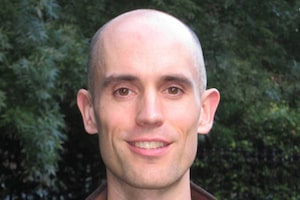Sign up for the weekly Health & Wellness newsletter for the latest news and advice.
The main reason we’re all so unhealthy these days is that our lives are too easy. Slouched in our office chairs, crammed in our cars and splayed out on our sofas, most of us no longer lead the heartily physical lives of our stout-limbed farmer and labourer ancestors.
That’s the current thinking – but, according to some researchers, there’s a curious inconsistency in the data. You’d think that those who still get plenty of physical activity as part of their jobs would be healthier than desk jockeys. Instead, as a new study in Medicine & Science in Sports & Exercise reports, more work-related exercise seems to make people less healthy, a puzzling finding that raises important questions about how we prescribe exercise.
The health benefits of what researchers call “leisure-time physical activity” are overwhelmingly clear, with dose-dependent effects on your risk of heart disease, metabolic syndrome and premature death. The more often you break a sweat on your own time, the better.
In contrast, a 2018 analysis that combined the results of 17 studies with nearly 200,000 participants found that men with highly physical jobs were 18-per-cent more likely to die early compared to those with less physical jobs, even after adjusting for factors such as education, income and smoking.
In this case, more seems to be worse, which leaves physical labourers with an after-work dilemma, says Andreas Holtermann, a co-author of the 2018 study and a professor at Denmark’s National Research Centre for the Working Environment: “Should they sit down and rest from the manual work, or do exercise for keeping fit?”
The apparent paradox has sparked controversy among researchers in the field. In a response to the 2018 meta-analysis, Roy Shephard, an emeritus professor at the University of Toronto, attributed the results to “failures in some study methods,” including misclassification of jobs as sedentary or physical and insufficient consideration of socioeconomic factors.
To resolve the debate, everyone agrees that more research is needed. That’s where the new study, from a research team in Finland led by University of Jyvaskyla doctoral candidate Anna Kankaanpaa, comes in.
The study has two distinctive features. One is that its subjects were 235 pairs of twins, some of whom reported significantly different long-term patterns of physical activity compared with their sibling. That enabled the researchers to tease out the relative contributions of nature and nurture.
The second is that, instead of waiting until enough of their subjects died, the researchers used a proxy measure called “epigenetic aging” to estimate the health status of their subjects. By looking at a property called methylation in DNA obtained from blood samples, they could estimate how much “older” or “younger” each subject’s cells appeared compared with his or her chronological age.
While about 60 per cent of the variation in epigenetic age was explained by genetics, physical activity also contributed. The more leisure-time exercise the subjects reported, the younger their epigenetic age appeared compared to their actual age. Conversely, the more occupational physical activity they reported, the older their epigenetic age appeared, seemingly confirming the paradox.
There are several possible explanations for why work-related physical activity could cause problems, Kankaanpaa says. Heavy lifting or being on your feet all day may keep blood pressure and heart rate chronically elevated, unlike the short, sharp increases you’d get at the gym. And long workdays stacked back-to-back without sufficient recovery might trigger elevated inflammation throughout the body.
Kankaanpaa’s statistical analysis also suggested a simpler possibility, though: “Smoking probably explains the observed negative association between occupational physical activity and epigenetic aging,” she says. And smoking itself may be an indicator of other harder-to-measure behaviours that similarly impact health, such as alcohol consumption and dietary habits.
Still, even after smoking is taken into account, both Kankaanpaa and Holtermann believe there’s a real effect here – and thus a gap in our public-health recommendations. To give the right advice, we’ll need more research, which Holtermann believes has the potential to reduce socioeconomic health inequalities.
Alex Hutchinson is the author of Endure: Mind, Body, and the Curiously Elastic Limits of Human Performance. Follow him on Twitter @sweatscience.
 Alex Hutchinson
Alex Hutchinson